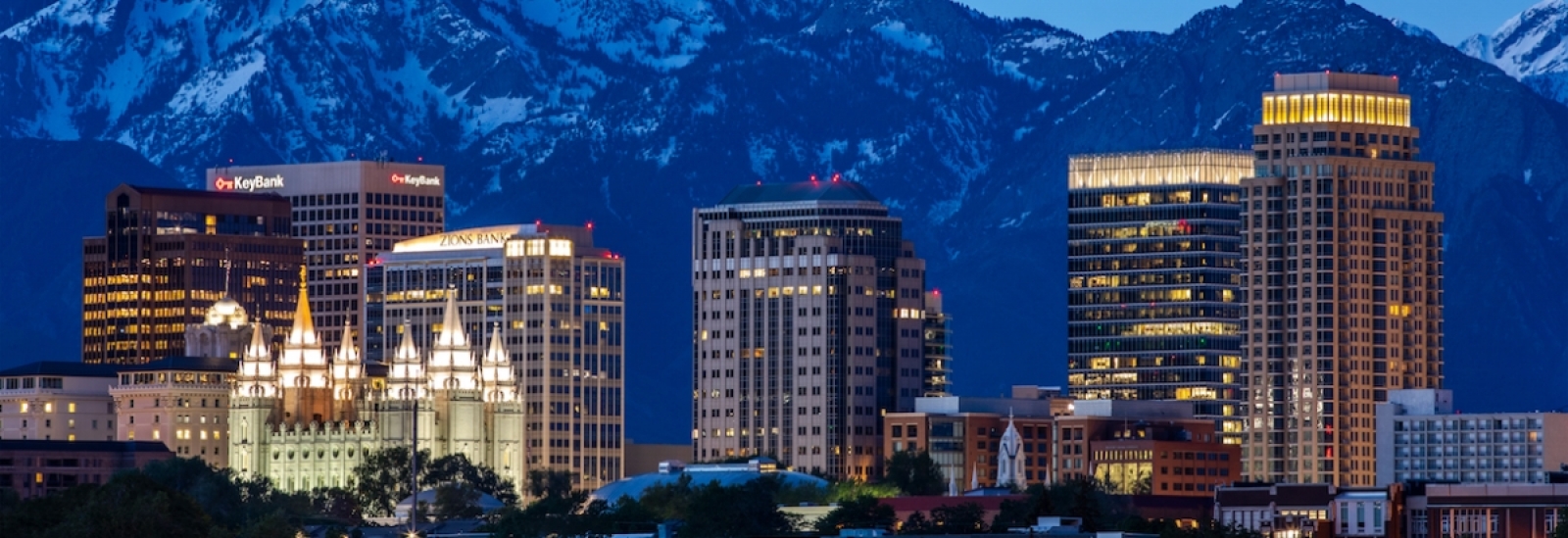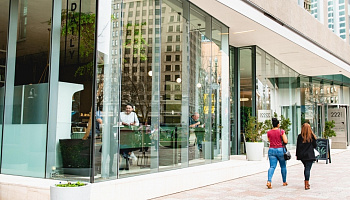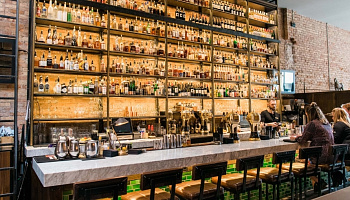As downtown property leaders prepare for the crisis, stabilization and recovery phases of the COVID-19 pandemic, the most important thing we can do for our common health and our collective economic recovery is to follow health advisories for preventing the spread of the COVID-19 virus. Preserving our collective health is our primary goal. And it will help us resume the work, payrolls and economic activity vital to downtown Salt Lake City’s future. Below are links and best practices we recently gleaned from commercial real estate leaders.
Protect your stakeholders’ health and safety:
- Ensure your sick employees stay home and away from people.
- Perform COVID-19 cleaning protocols
- Share guidance for employers -- practice and share with tenants.
Considerations to promote cleaner air:
- Disinfect the indoor environment daily. Open windows and ventilate frequently.
- If possible, use ultraviolet radiation on the cooling coils and drain pans of the air conditioning system.
- Where possible, identify separate ascending and descending stairways to assist with social distancing. Enhance ventilation in stairwells.
- Run stand-alone air purifiers to further reduce possible contaminated air and air pollutants brought in by natural ventilation.
Take a long-view on tenant lease, rent options and relief:
- Often, the key provisions affecting rent abatement in a typical commercial lease are:
- Interruption of Essential Services.
- Casualty.
- Condemnation.
- Force Majeure.
- Property owners and occupiers should determine lease provisions’ applicability to the COVID-19 pandemic and key issues such as:
- Access to the Premises: Is the tenant’s premises available for use?
- Governmental Action: Has the tenant’s decision not to occupy the space been caused by government action (i.e. curfew or shelter-in-place order)?
- Essential Services: Is the landlord providing all required services to the tenant (i.e., utilities, HVAC, cleaning, security)?
- Damage: Has there been damage to the premises?
- Facilitating a productive dialogue between occupiers and owners around lease provisions, each other’s current circumstances and potential business resolutions will strengthen relationships for a path forward together.
Update your emergency management plan and Address:
- Infectious disease
- Needs of vulnerable occupants
- Staff responsible for managing response on property
- Staff responsible for managing tenant communications
- Updating off-site contact information for tenants.
Publish information resources to tenants:
- Create and publish shelter-in-place plans
- Explain and reiterate enhanced cleaning procedures in the common areas
- Communicate effectively. Be credible. Express empathy. Promote action. Show respect.
Audiences:Communication Channels:Use Verified Sources:
Employees
Your website Coronavirus.utah.gov Tenants Posters Salt Lake County Visitors Elevator, lobby screens Salt Lake City Contractors Telephone and text trees CDC Community Partners Webinars World Health Organization Media Email updates Urban Land Institute
Gather and promote good intel:
Industry leaders are collaborating on webinars and other communications. Stay up-to-date on property leaders’ proactive efforts and responses. Share helpful communications with Downtown Alliance () and we will publish resources to the downtown property community that you can use and share with your employees, customers and tenants.
Stay apprised of local and national financial resources such as:
- The historic Coronavirus Aid, Relief, and Economic Security (CARES) Act has made available $349 Billion in emergency small business capital through the Small Business Administration.
- Salt Lake City’s Emergency Loan Program is intended to help businesses keep their employees and stay afloat during a time of economic hardship.
- The Utah Governor’s Office of Economic Development is offering a bridge loan to Utah-based small businesses with 50 or fewer employees impacted by the COVID-19 pandemic.
Additional Resources:
DESIGN, REAL ESTATE, AND COVID-19
Architect Magazine: How Architecture Firms are Responding to COVID-19
Architectural Digest: How the COVID-19 Pandemic Will Change the Built Environment
ASHRAE: COVID-19 Preparedness Resources
Building Operating Management: Coronavirus Resources for Facilities
CERC: Crisis & Emergency Risk Communications
CIDRAP: COVID-19 Information for Employers, Business
CityLab: Pandemics Are Also an Urban Planning Problem
Curbed: Design in the age of pandemics
BOMA Canada: Coronavirus Resources
Center for Active Design: 5 Ways to Optimize Buildings for COVID-19 Prevention
Financial Times: How Healthy Buildings Can Help Us Fight Coronavirus
Multi-Housing News: What Property Managers Should Be Doing Right Now
New York Times: Your Building Can Make You Sick or Keep You Well
Next City: Housing in Brief: What Landlords Are Saying About Rent and Evictions During the Outbreak
OSHA: Guidance for Preparing Workplaces for COVID-19
Urban Land Magazine: Confronting COVID-19: Social Distancing, Buildings, and Lessons from Asia
World Health Organization: Getting Your Workplace Ready for COVID-19
GENERAL INFORMATION AND GUIDANCE
Enterprise Community Partners: Maintaining Business Continuity During the Covid-19 Pandemic
Global Wellness Institute: PositivelyWell
New York Times: Flattening the Coronavirus Curve
New York Times: How Long Will Coronavirus Live on Surfaces or in the Air Around You?
PBS NewsHour: How to help others in the COVID-19 crisis
USA Today: 6 things to know if you’re living with someone who has coronavirus, or think you might be
USA Today: Coronavirus reality check: 7 myths about social distancing, busted
U.S. CDC: Interim Guidance for Businesses and Employers to Plan and Respond to Coronavirus Disease 2019
U.S. CDC: What every American and community can do now to decrease the spread of the coronavirus
Washington Post: As coronavirus spreads, the bill for our public health failures is due
Source: Urban Land Institute




